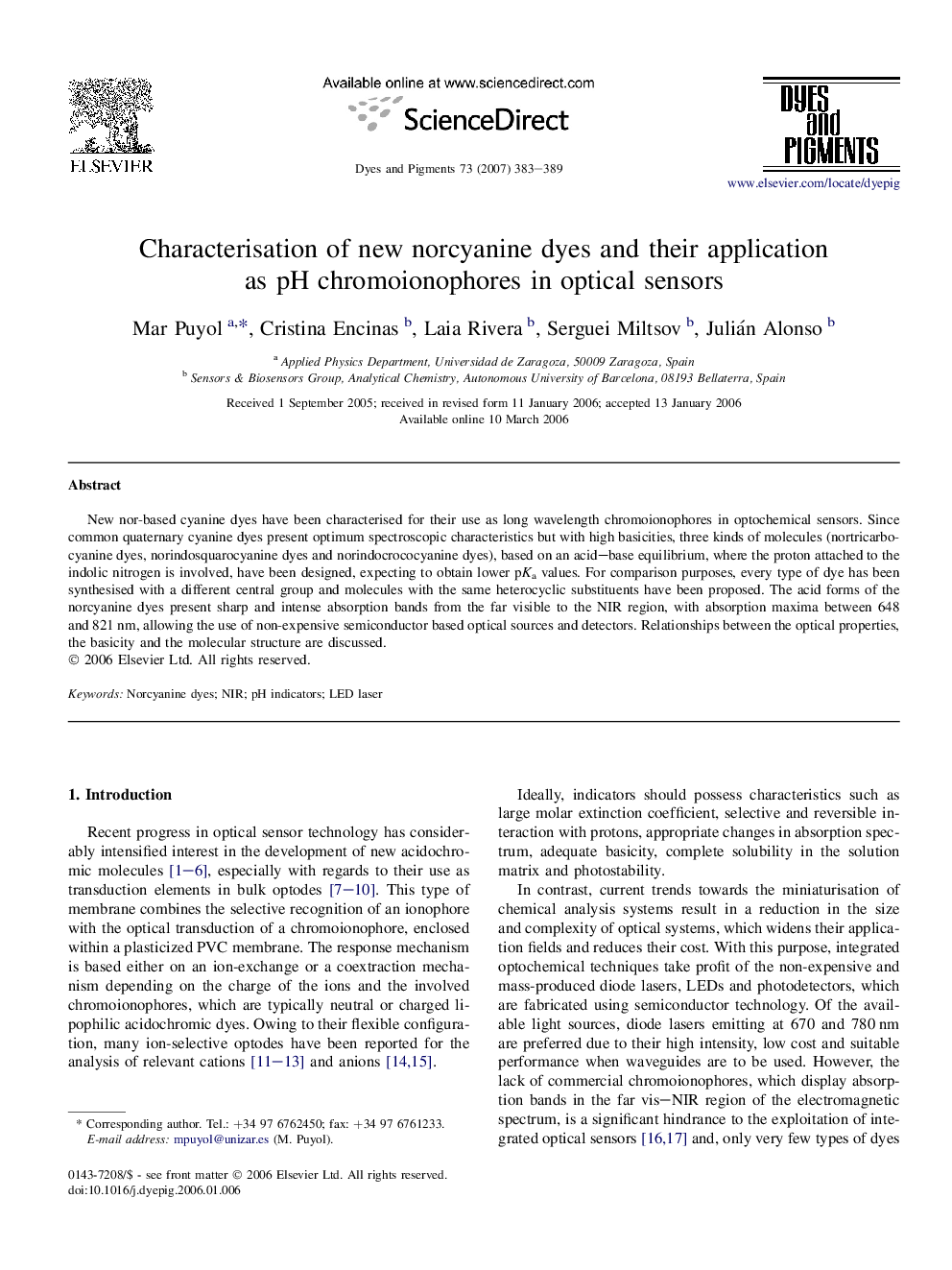| Article ID | Journal | Published Year | Pages | File Type |
|---|---|---|---|---|
| 178159 | Dyes and Pigments | 2007 | 7 Pages |
New nor-based cyanine dyes have been characterised for their use as long wavelength chromoionophores in optochemical sensors. Since common quaternary cyanine dyes present optimum spectroscopic characteristics but with high basicities, three kinds of molecules (nortricarbocyanine dyes, norindosquarocyanine dyes and norindocrococyanine dyes), based on an acid–base equilibrium, where the proton attached to the indolic nitrogen is involved, have been designed, expecting to obtain lower pKa values. For comparison purposes, every type of dye has been synthesised with a different central group and molecules with the same heterocyclic substituents have been proposed. The acid forms of the norcyanine dyes present sharp and intense absorption bands from the far visible to the NIR region, with absorption maxima between 648 and 821 nm, allowing the use of non-expensive semiconductor based optical sources and detectors. Relationships between the optical properties, the basicity and the molecular structure are discussed.
